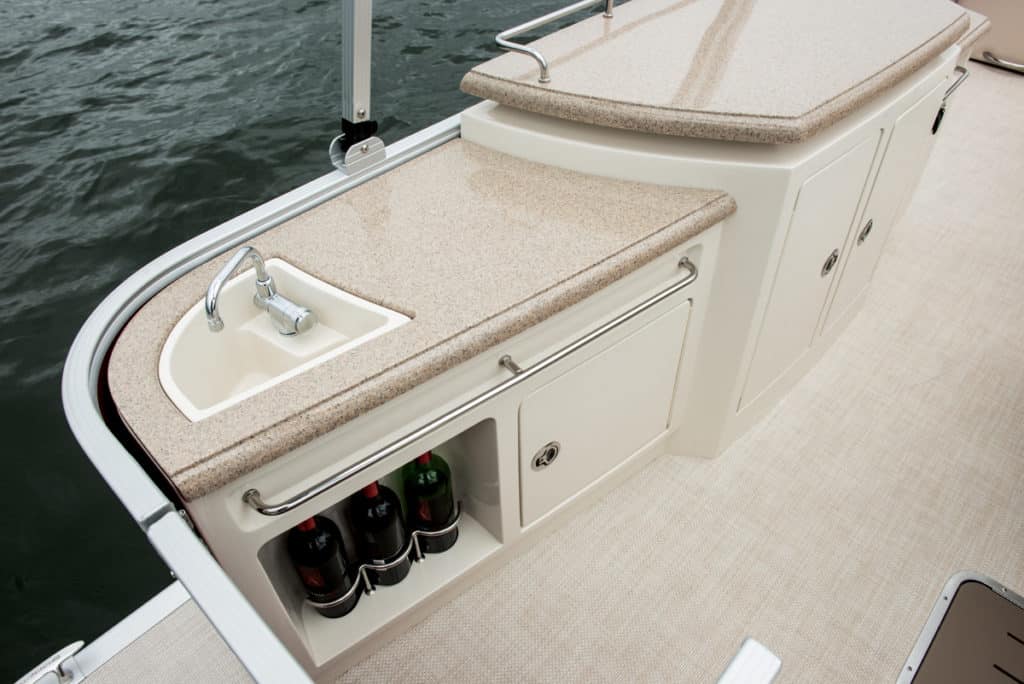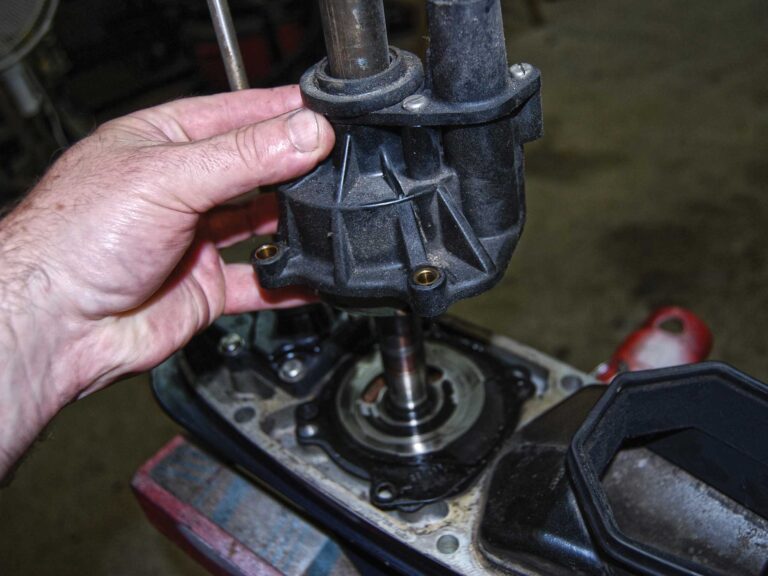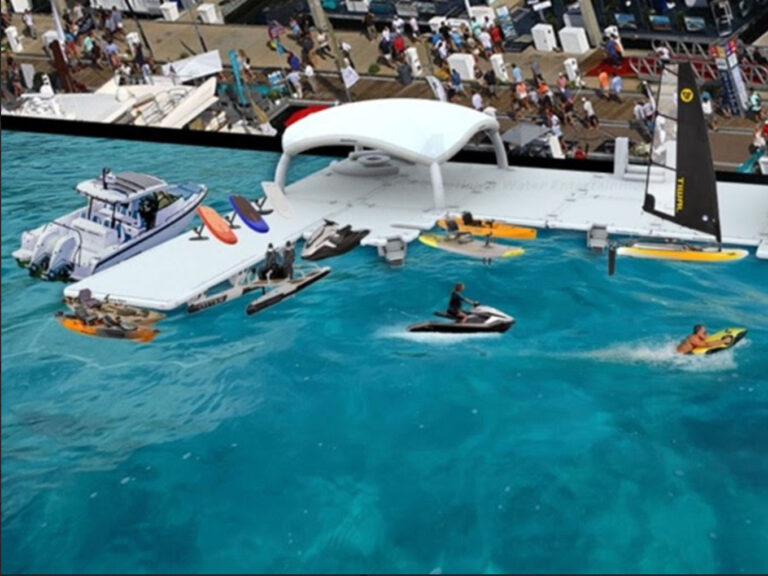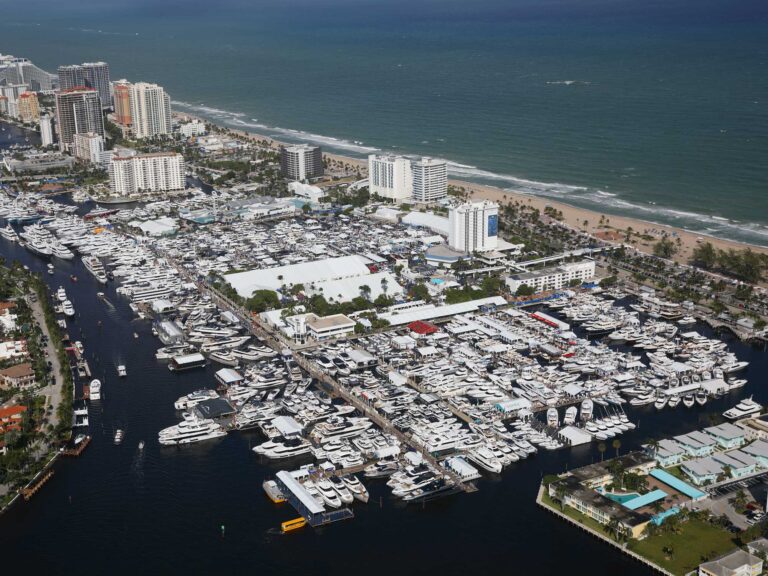
You’ve read plenty of articles on how to winterize your boat’s engine and drive. (If you haven’t, visit boatingmag.com/winterize.) But your craft has more than just a powertrain; batteries, water systems, heads and the like all need prep before the cold sets in, or they’ll likely fail upon start-up in spring. Here’s the rundown on what to service and how to do it.

Freshwater Systems
You can’t leave any water in the system untreated, or it might freeze, expand and crack or burst whatever is trying to contain it (tank, fitting, pipe, etc.). Drain the tank. A portable pump of some sort, connected to the tank drain, allows pumping the tank and water heater water outside the boat, if draining it out through the bilge won’t work. Disconnect the in and out lines. Pour in nontoxic antifreeze (“RV Red,” available at RV and marine supply stores and hardware stores; this is generally comprised of a propylene glycol solution) until the red antifreeze runs out and you’re sure no more untreated water remains. You just want the antifreeze to have gone through — there is no need to keep the water heater or water tank filled with antifreeze solution. In fact, doing so creates a tedious purging chore in the spring.
Shower and Sinks
Here, another shop-built hose trace — plus a turkey baster — will prove helpful. Disconnect the water intake at the water pump (between water tank and pump). Connect the hose, which you made long enough to reach your “reservoir” of antifreeze (jug, bucket, etc.) to the appropriate fitting. Turn on the pump and then open faucet valves one by one, closing each when “red” comes out. The turkey baster? Use it to prime the pump after disconnecting the supply hose: Hold the end of your shop-made hose high, squirt some antifreeze into its end, and then stick the end into the antifreeze.
Turn on the sink or shower pump and open the faucet valve. When red antifreeze comes out the faucet, close the valve. Sinks and showers must also be cleaned, washed and dried; pour red antifreeze down the drains when finished.

Why Pink?
Pink or red antifreeze makes it easy to see if translucent tubes and hoses are filled with antifreeze. It also makes it easy to see when antifreeze, not water, is running out the drain of a device, ensuring full flush.

Head
The contents of the head and holding tank must be pumped out at an approved pumping station. As it’s being pumped, pour toilet cleaner (check your owner’s manual for approved cleaners) into the bowl and let the cleaner sit for a few minutes. Then, flush and give it a final rinse and pour RV Red antifreeze through the bowl, macerator pump, holding tank, Y-valve and discharge hose.

Water Heater
You don’t want to leave your water heater filled with antifreeze over the winter. Simply drain it and then flush with antifreeze until you see pink antifreeze come out the drain or portable pump discharge. But you need to flush antifreeze through the other water system components; to avoid needing enough antifreeze to fill the water heater, savvy boaters make a bypass hose consisting of a length of hose and standard NPT fittings. Connect one side of the bypass to the heater’s cold supply and the other end to the hot return line on the domestic water side of the heater.

Raw-Water Systems
If you have a saltwater washdown or anchor washdown, this should be winterized as well. Disconnect the intake at the seacock (close the seacock if in the water). Next, jam the now loose end of the intake into a jug or container of antifreeze. Turn on the pump, open the valve, and leave it open until red antifreeze runs out.

Bilge
The bilge should be thoroughly cleaned and scrubbed of all oil and dirt. Use a biodegradable cleaner (Simple Green works well) and thoroughly dry the area before layup. Just before storage, add a little RV Red antifreeze in the lowest part to prevent any water or condensation from freezing.

Department of the Interior
Interior killers are mold and critters. To keep mold at bay, remove all personal items from storage (life jackets, anchors, fire extinguishers, etc.) and air-dry them; then store them in your garage. Inspect them and replace as needed over the winter months. Alternatively, if there’s no room at home, hang them throughout the boat so they’re not sitting and can’t collect moisture. Vacuum and air-dry all inner compartments, drawers and lockers — especially carpeted areas. Don’t replace covers and cushions tightly; leave them off or place them on loosely to promote air circulation. Put moisture absorbers such as Damp-Rid or similar commercially available products in these areas, and if necessary invest in a small circulation fan, especially if the boat will be shrink-wrapped.

What You Should Look For in Nontoxic Freeze Protection
There is the story about the boater who would winterize the freshwater systems aboard his boat with gin: He never had frozen water nor a problem getting volunteers to help him make the boat ready in the spring.
Most boaters use nontoxic antifreeze, like the West Marine Pure Oceans below, not spirits, to “pickle” their systems and protect them from freeze damage. But what is the difference between the various types and colors displayed in those huge stacks on the showroom floor of marine supply and boat dealers in the fall? Here are the two basic characteristics to consider when purchasing nontoxic antifreeze.
Protection Level: Look for antifreeze rated for the coldest weather your stored boat will experience. Some antifreezes come pre-mixed and should not be diluted; others can be diluted with water to customize the level of protection to suit your situation.
Corrosion Inhibitors: If you need to protect engine raw-water systems and heat exchangers as well as freshwater systems aboard, make sure the antifreeze includes corrosion inhibitors. There is no need for inhibitors if you are just protecting the plastic hose and tubing of freshwater systems (including heads).

Fuel System
Fill the tanks almost full to prevent condensation. Fuel should be treated with a fuel conditioner (Star Tron, Sta-Bil, etc.). I prefer too much rather than too little; I typically increase the dosage noted in the instructions by at least a third. The engine must be run long enough (usually at least 10 minutes, some maybe more) to get the treated fuel into the intake and engine before final shutdown. In fact, if you can, add the winterizing dose of fuel stabilizer to the tank during or just before the last trip of the year to really ensure it’s throughout the system.

Fuel Filters and Miscellany
Change the water-separating filter and any in-line filters. With gasoline today laced with so much alcohol, if your rig hasn’t had the fuel lines and related connectors, primer bulb, vent and fill hoses replaced since before 2011 or so, it’s time to do that — they can deteriorate and break down from the inside out due to exposure to the alcohol in the fuel. The globs and strings of rubber from this breakdown process end up in the engine. And then you need a mechanic.

Batteries
All flooded electrolyte (non-AGM) battery cells must be topped off with distilled water, and then the battery must be fully charged so the water won’t freeze. The terminals should be cleaned: Baking soda or Coke works well, with baking soda neutralizing the acid. Coat the terminals and exposed wire/cable ends with dielectric grease. If possible, remove the batteries from the boat and store them in a cool, dry room.

Electrical System
Ensure that all battery switches and breakers are off so nothing can feed back and/or surge.
Appliances
Refrigerators and freezers must be turned off, defrosted and cleaned; doors should be left open. Stoves, ovens and microwaves should also be cleaned.

Winterizing on the Hard
Boats winterized on blocks or on the trailer may not be level, so gravity may not drain all water. If you have a compressor, blow the lines using air before adding antifreeze. Purchase more antifreeze than you theoretically should need. Fill the system till you see the red come out the drain and have antifreeze, not water, remaining in any low spots.

Trailer
If your boat’s stored on the trailer, the fall is a good time to inspect and repair any problems with lights, tires, bearings, bunks, jack, coupler and winch. Keep all items lubricated and protected from harsh winter weather. Touch-up-paint all areas that will rust. If your trailer’s galvanized, touch up rusty areas by spraying cold galvanized coating. Removing the wheels and tires and blocking up the frame evenly will prolong spring, axle and tire life — and help to discourage theft.

Hull and Deck
The boat should receive a thorough cleaning and wax coating. The bottom, if fouled with marine growth, should be cleaned completely before storage. It will be much harder to clean in the spring if left dirty over the winter. The boat should be stored on its trailer or on a set of stable boat storage dollies.

Tops, Biminis, Covers, Side Curtains
Certainly these need to be spread out, cleaned and dried before putting them away for the winter. If your boat will be stored inside, use the mooring or trailering cover to protect it from dust, dirt and animals. For outside storage, if your boat’s to be shrink-wrapped, don’t cover it first. Store the cover (and tops, Bimini and any other canvas) in a cool, dry place.

Theft Prevention
This is a tough one. For sure, park your boat in a tucked away place, away from prying eyes if possible. A boat sitting near a boatyard’s perimeter fence invites thieves; they’ll be tempted to steal props, outdrives, etc., if left out in the open. Protect the drive with locks; remove the propellers and store them inside, and lock the trailer tongue and wheels. If possible, lock the entire rig to a tree, fence or other immovable object with a long chain and big padlock. Make it appear as uninviting as possible to would-be thieves.









